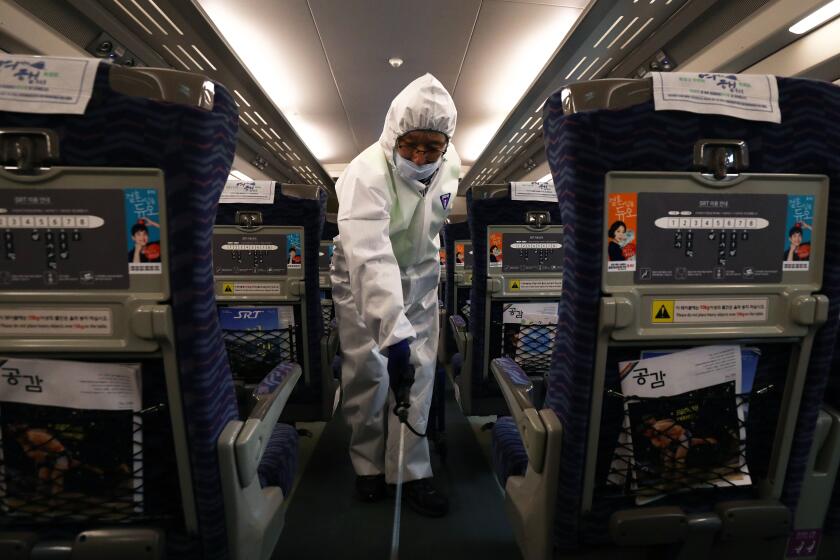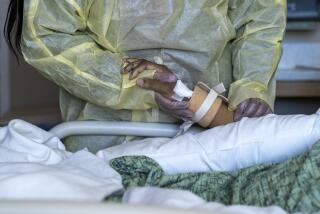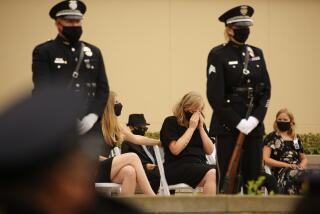News of death should not come by phone. Doctors struggle to adapt to coronavirus reality

NEW YORK — Matt Kaufman is accustomed to death. He knows well the task of telling people that someone they love is gone — from a stroke, an overdose, a car accident, or any of the dire scenarios he often sees at the urban New Jersey hospital where he works.
Usually, says the emergency room doctor, he can find a way to honor the gravity of the moment with small but meaningful gestures of compassion — waiting while a family member cries, touching them gently on the shoulder, or simply looking them in the eye to give them words nobody wants to hear.
He had never broken such news over the phone. Until now.
COVID-19 has changed things for many people, and so it has for him. Sometimes these days, while muffled by the N95 protective mask he wears throughout his shift, he shouts over the din of the ER. He recently told a woman her daughter had died.
“It is awful,” said Kafuman, a director of medicine at Jersey City Medical Center in Jersey City. Like many other hospitals in and around New York City, the epicenter of the pandemic, it has seen a dramatic influx of seriously ill patients over the last three weeks.
“The overall acuity, how sick people are, has ramped up in a tremendous way,” he said. “I have never seen so many people dying. You walk into the room and it’s cardiac arrest here and cardiac arrest there. That is what is unbelievably shocking to me and disturbing.”
Most hospitals in the region have barred anyone other than patients and medical staff from the emergency room in an effort to halt the spread of the coronavirus that causes COVID-19. This means parents, spouses, children and siblings who would typically be waiting in the emergency room are at home, unable to say goodbye.
Kaufman is one of hundreds of doctors who have had to change how they practice medicine because of COVID-19, particularly the delicate burden of bearing news of death.
Kaufman said the calls are often met with disbelief: “‘How did this happen?’ ‘Wait, what? Are you sure it’s the right person?’ This happens when you can’t do it in person. It’s obviously distressing. And you feel pretty impotent about being able to help or do the right thing. It’s heartbreaking.”
Governments and health officials around the world are trying to mitigate the spread of the coronavirus outbreak.
It is perhaps the most painful act of social distancing, another cruel detachment in this strange time. Many doctors, already struggling to connect with patients on a personal level through alienating layers of personal protective equipment, are attempting to mitigate these difficulties by using FaceTime to at least put a human face on the interaction.
“You can’t give those lives proper attention even when the ultimate has happened; when they’ve died, you can’t even properly tell the family members. That is a really terrible thing that trivializes life and what we are doing in a profound way,” Kaufman said. “You feel like you’re not doing right by people. There’s usually a way you can have confidence you’ve done it in a way that’s at least respectful, and that’s not happening right now.”
“Frankly we are kind of rushing it, as awful as that sounds,” he said. “We don’t have the time to do that in a proper way.”
The daily death tolls in New York and New Jersey both reached new highs this week. As of Thursday, 4,778 people in New York City have died of COVID-19, according to the New York City Department of Health and Mental Hygiene, eclipsing the 2,753 people killed in the World Trade Center attack on Sept. 11, 2001. The crisis has also spread across the Hudson River to New Jersey, which as of Thursday had seen 1,700 fatalities statewide, the second-highest toll in the country, according to the New Jersey Department of Health.
“It’s exponentially getting worse every day. I don’t want to provide a sense of panic, but people need to know how dire it is and what we’re dealing with,” said Stefan Flores, who practices in the ER at Columbia University Medical Center locations in the Bronx and upper Manhattan.
In New York City, emergency rooms are often “already operating at max capacity,” he explained. As COVID-19 has ravaged the city, the ER has become a war zone. By the time he made it two hours into a shift this week, Flores had already had two patients die and was having end-of-life discussions with two others. “The level of devastation and volume and acuity is unprecedented and unlike anything I’ve ever seen. It’s been emotionally and physically exhausting.”
Covered in PPE while treating patients who are also wearing masks or hooked up to breathing devices, he finds it hard to communicate or convey empathy as he normally does.
“Touching patients and just listening to them. That’s what we do and what we do well, and that has been lost,” he said.
Perhaps the most emotionally difficult aspect of the pandemic has been watching patients “suffocating and dying alone,” he said. “It is mental terrorism.”
Flores and some of his colleagues have started to use FaceTime to allow people, if only on a smartphone screen, to see critically ill family members and provide a measure of closure — something he has never had to do before.
“This may be the last time people hear the voice of their loved ones, before they are intubated or before they die, and allowing them to see them before they die during these critical times bridges the gap for the empathy that is lost without all the things we normally do at the bedside,” he said. “It is really hard to do that, to literally sit and show someone their dying loved one over the phone. It’s horrible. But it provides a sense of humanity.”
Similarly for Lynn Jiang, a doctor of emergency medicine at Weill Cornell Medical Center in Manhattan, the biggest change has been the way she communicates with patients and their families. She has started to rely heavily on technology to have frank discussions about a patient’s health or provide updates on their condition.
“FaceTime, WhatsApp and all these new communication tools have become almost the norm now where previously we were able to talk in person to family members,” she said. “We almost become more involved than we ever were before, because now we’re the only point of contact between a family and a loved one.”
The challenging circumstances inspired Jiang to start an Instagram account as a space for front-line healthcare workers to share their experiences as the virus began to spread. She thought of it as “a way to create a community when our faces are hidden behind our gear.”
In his off time, medical ICU nurse Oh Young-jun sketches scenes from his job within a coronavirus isolation ward in South Korea.
The crisis in emergency rooms has been compounded by an increased number of personnel falling sick with COVID-19.
“Nurses, doctors, X-ray techs — the whole thing falls apart if one of these service lines falls apart,” Kaufman said. “If you don’t have a transporter, you can’t move your patients around. I worry about ventilators. But it doesn’t end with a piece of equipment. You have to have the staff.”
A week ago, Kaufman was seeing a lot of patients in Jersey City, but was not yet overwhelmed. That has changed.
Making matters worse, Kaufman has to advise loved ones that if they had had contact with the deceased person, they may be infected and will have to quarantine. That is “impossible to explain to someone,” he said. “It is quite brutal. This is someone who’s just found out someone they love is dead. And you’re supposed to educate them on what to look for. ‘Don’t be scared. Your loved one died, but that doesn’t mean you will.’”
Far from the big coastal hubs, a hospital in Albany, Ga., is struggling with one of the fiercest coronavirus outbreaks in the nation.
Doctors are not just relaying the news of a patient’s death over the phone, they are also having sensitive end-of-life conversations with stunned family members who are often unprepared to make medical decisions.
Many of the critically ill patients are elderly people with underlying health conditions who come from nursing homes or assisted-living facilities, said Dr. Tsion Firew, an emergency room physician in Manhattan. Their family members may not have seen them in a few days or understand how quickly these patients can go downhill.
Another factor, she said, is the delay in response time by emergency medical technicians. Patients are being advised to stay away from the hospital until the last minute, and it can take three to four hours for an ambulance to arrive, she says, during which time a patient’s condition can decline precipitously.
Firew now finds herself having delicate end-of-life discussions with family members on virtually every shift. For most patients who go on ventilators, the chance of recovery is “minimal,” she said.
“The question is always do you want to prolong this process by putting them on a ventilator or is dying in peace something they would have wanted. It’s very difficult to have those conversations with that speed, being able to find the phone numbers. That’s something that we’re all seeing,” she said. “I think it’s very important that everyone have this difficult conversation with their parents.”
More to Read
Sign up for Essential California
The most important California stories and recommendations in your inbox every morning.
You may occasionally receive promotional content from the Los Angeles Times.











